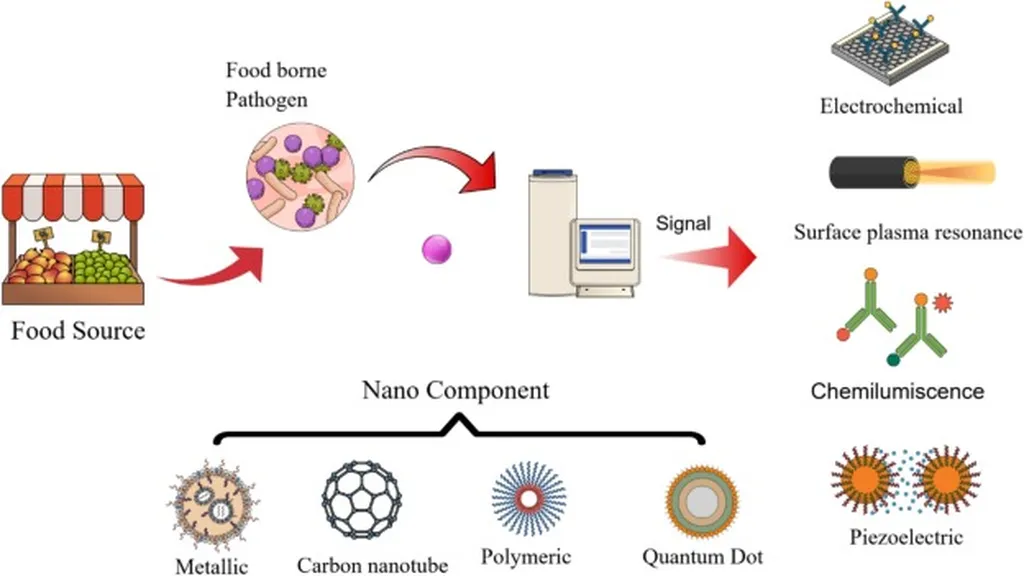In the relentless battle against foodborne pathogens, speed and accuracy are paramount. A recent study published in *Scientific Reports* introduces a groundbreaking colorimetric biosensing platform that could revolutionize the detection of *Salmonella typhimurium*, a leading cause of foodborne illness globally. This innovation, spearheaded by Sobhan Soleimani from the Department of Nanotechnology at the Agricultural Biotechnology Research Institute of Iran (ABRII), leverages the antimicrobial properties of silver ions to create a rapid, on-site detection method that could significantly impact the agriculture and food safety sectors.
The novel sensor operates on a clever principle: it exploits the interaction between silver ions and *Salmonella* bacteria to produce a visible color change. In the absence of bacteria, silver ions are reduced by ascorbic acid and uniformly coat gold nanorods, inducing a blue shift in color. However, when *Salmonella* is present, the bacteria sequester the silver ions, inhibiting complete shell formation and resulting in a red shift. This color change, which can be visually discerned without the need for sophisticated instruments, provides a quick and reliable indication of bacterial contamination.
“This method offers a unique blend of microbiology and nanomaterials science,” says Soleimani. “By integrating anti-*Salmonella* aptamer-conjugated magnetic nanoparticles, we ensure specificity and minimize matrix interference, making it highly effective even in complex food samples.”
The practical implications for the agriculture sector are substantial. Rapid and accurate detection of *Salmonella* can prevent contamination in food supplies, reducing the risk of outbreaks and the associated economic losses. The sensor’s ability to achieve a linear dynamic range and a low limit of detection (2.0×10^6 CFU mL−1) makes it a robust tool for on-site screening. Successful validation in spiked chicken bouillon samples, with a recovery rate of 93.3% and a relative standard deviation of 3.5%, underscores its potential for real-world applications.
The commercial impact of this technology could be profound. Farmers and food processors could use this sensor to monitor contamination levels in real-time, ensuring safer food products and reducing the need for costly recalls. The simplicity and cost-effectiveness of the method make it accessible for widespread use, potentially transforming food safety protocols globally.
As the agriculture industry continues to embrace technological advancements, this research paves the way for more innovative solutions in pathogen detection. The integration of nanomaterials and microbiology not only enhances detection capabilities but also opens new avenues for research and development in the field. With further refinement, this technology could become a standard tool in the fight against foodborne illnesses, safeguarding public health and supporting the agricultural economy.
In a world where food safety is paramount, this breakthrough offers a promising solution that could shape the future of pathogen detection and food safety protocols.

